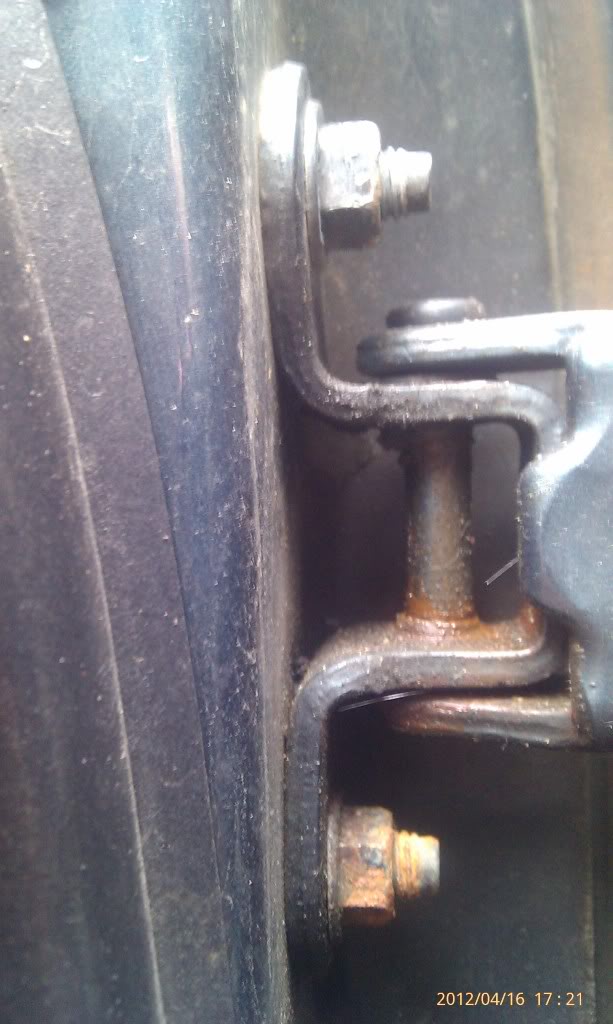Tired of the rattling sounds and unsightly appearance of a sagging door? Don’t worry, you’re not alone. Saggy doors are a common problem that can be easily fixed with the right knowledge and tools. In this in-depth guide, we’ll take you through the step-by-step process of fixing a saggy door, from identifying the root cause to making the necessary adjustments. Get ready to transform your sagging doors into perfectly aligned and smooth-functioning portals.

Image: maxima.org
Why Do Doors Sag?
Before jumping into the repair, it’s essential to understand why doors sag in the first place. Here are a few common culprits:
- Loose screws or hinges: Over time, the screws or hinges that hold the door in place can loosen, causing the door to sag.
- Warping: Changes in temperature and humidity can cause the door to warp, resulting in a sagging effect.
- Improper installation: If the door was not initially installed correctly, it may be prone to sagging due to the incorrect alignment of the frame or the use of inadequate support.
Step-by-Step Guide to Fix a Saggy Door
Now that you know the potential causes, let’s dive into the practical steps to fix a sagging door:
- Identify the source: Examine the door and its components to determine the root cause of the sagging issue. Assess if there are any loose screws or hinges, signs of warping, or indications of improper installation.
- Tighten loose screws: If the screws holding the hinges or the strike plate are loose, simply tighten them using a screwdriver. Ensure that they are securely fastened, but avoid overtightening to prevent stripping the screw holes.
- Adjust the hinges: If loose screws are not the culprit, adjust the hinges to correct the alignment of the door. Loosen the screws on the hinges slightly using a wrench or screwdriver, then reposition the door and tighten the screws to secure it in the new position.
- Replace damaged hinges: Inspect the hinges for any cracks, breaks, or bent pins. If you find any damaged hinges, they should be replaced to restore the proper support and alignment of the door.
- Fix warping: Moderate warping can sometimes be fixed by applying moisture to the affected area. Use a damp sponge or cloth to moisten the surface repeatedly until the warping gradually diminishes. Avoid excess moisture, as it can damage the door.
- Reinstall the door: In cases where the sagging is caused by improper installation, removing and reinstalling the door may be necessary. This involves carefully removing the door from the frame, checking the alignment of the frame and hinges, and then reinstalling the door with the correct alignment.
- Lubricate the hinges: After aligning the door, apply a lubricant to the hinges. This will reduce friction and ensure the door opens and closes smoothly, preventing premature wear and sagging.
- Confirm alignment: Once the adjustments are made, check the alignment of the door. It should hang evenly within the frame, with a uniform gap around all sides. Close and open the door to ensure it moves smoothly and without any binding.
Expert Tips and Advice
To enhance the effectiveness of your door repair efforts, consider these expert tips:
- Use longer screws: If the original screws are too short to hold the door securely, replace them with longer screws for a more robust connection.
- Apply a shim: If there is a slight gap between the door and the frame, insert a small shim to fill the space and prevent the door from rubbing against the frame, which can cause sagging.
- Avoid excessive force: When tightening screws or adjusting hinges, use moderate force to prevent damage to the components.

Image: www.pinterest.com
Frequently Asked Questions
- Q: How often should I check my door for sagging?
A: It’s recommended to inspect your doors periodically, especially after exposure to significant changes in temperature or humidity, to ensure they are operating correctly and prevent future sagging issues. - Q: Can I fix a sagging door without removing it?
A: In some cases, you can make minor adjustments without removing the door. However, if the sagging is severe or caused by improper installation, removing and reinstalling the door may be necessary. - Q: What type of lubricant should I use on my door hinges?
A: For door hinges, consider using a light lubricant specifically designed for metal surfaces. Avoid using heavy greases that can attract dirt and grime, leading to premature wear.
How To Fix Saggy Door
https://youtube.com/watch?v=eqS7PDxtPAQ
Conclusion
Fixing a sagging door is a simple and effective task that can significantly improve the functionality and appearance of your home or office. By following the comprehensive steps outlined in this guide and implementing the expert tips provided, you can restore your doors to their former glory and ensure they operate smoothly and reliably for years to come.
Are you ready to tackle the sagging door issue with confidence? Get started today and enjoy the satisfaction of restoring your doors to their ideal alignment and functionality.